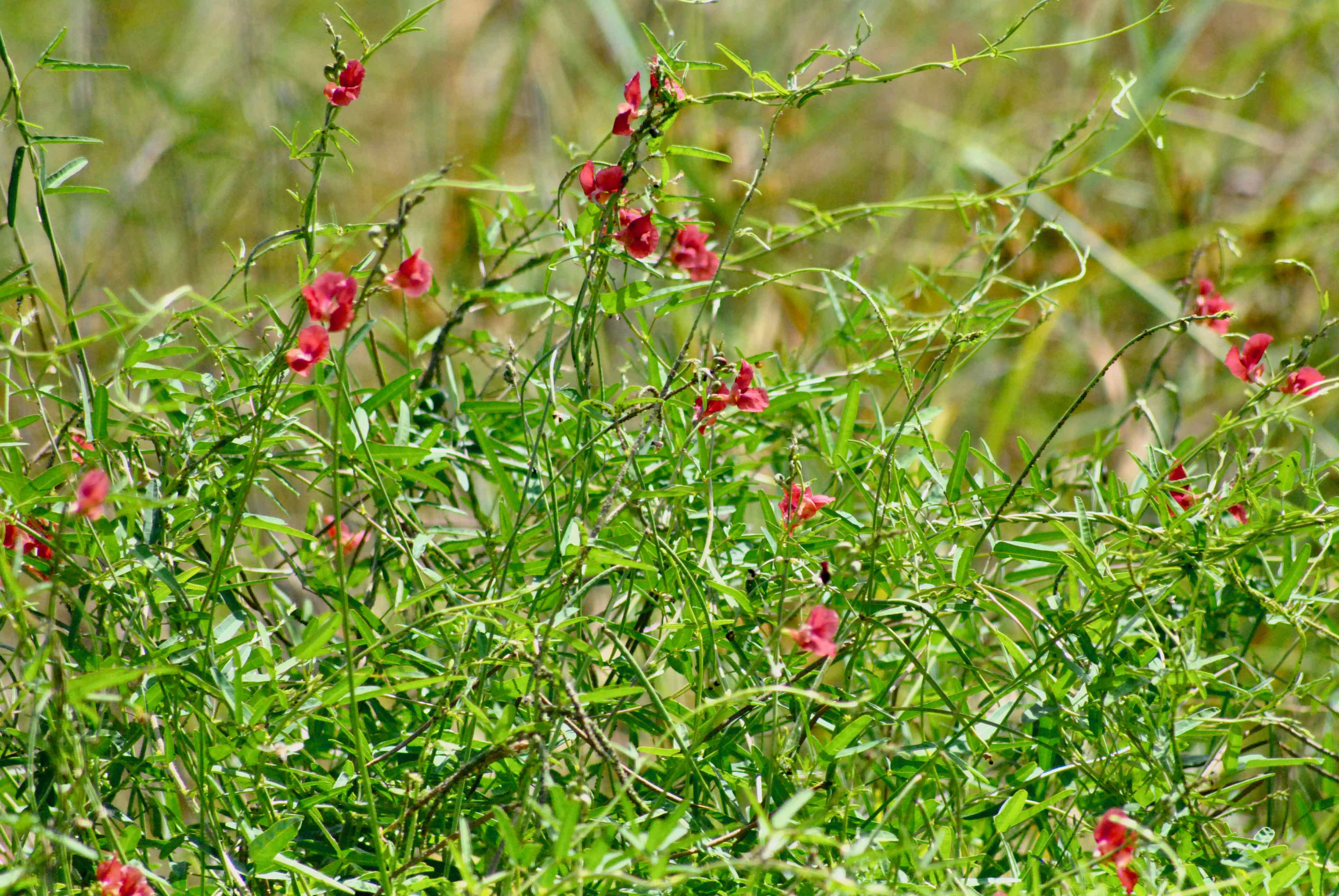
Wild bush bean, photographed at Pondhawk Natural Area, Boca Raton, Palm Beach County, in August 2013.
Wild bush bean, Macroptilium lathyroides, wouldn't be a problem if it only grew where we wanted it to grow. Problem is it doesn't always. And that's a really big problem in parts of Florida.
Wild bush bean is a native of tropical Mexico, Central and South America and the Caribbean, including Puerto Rico and the U.S. Virgin Islands, brought here and other parts of the world as forage for cattle. It is a legume, so it also improves the soil. A two-fer, if you will. And it's highly adaptable to a wide range of conditions.
Unfortunately, its adaptability has allowed wild bush bean to establish itself, or naturalize, in the wilds of the Sunshine State. It is capable of forming dense patches that block out native plants, earning it a place on the Florida Invasive Species Council's 2013 list of invasive species. FISC was then known as the Florida Exotic Plant Pest Council. It is a Category II invasive, meaning it's spreading in the state, needs to be monitored but has yet to alter ecosystems. It is found throughout the state, but it is a particular problem in the Florida Keys.
Wild bush bean is a member of the pea family, Fabaceae. It is a vine that will grow erect, trail or twine on other plants to a height of about five feet. It produces gorgeous blood-red to purple flowers (sometimes white or pink) usually in pairs. The flowers give way to thin, hairy pods that grow about four inches long. The pods can contain between 20 and 30 seeds each. The flowers self-pollinate. Stems become woody at the base on older plants; leaves are compound, with three leaflets. The plant is usually an annual, but can be biennial or a short-lived perennial. It does not tolerate frost.
Beyond Florida, wild bush bean has become naturalized in South Carolina, Louisiana Georgia and Hawaii, along with warmer parts of Africa, Asia, Australia and the Pacific islands. It's rarely considered a pest, however; in places in the Pacific, like Fiji, it is considered an invasive, yet it's still widely cultivated as forage. It's also used as a cover crop and as a "green manure" because of its ability to improve soils by "fixing" nitrogen from the air.
As we said, wild bush bean is extremely adaptable. It will grow in heavy, clay soils but also in loose, sandy soils as well. It will grow where rainfall is light but also where it is heavy. It will grow in wet places; it will grow in scrubby places. It will grow in open fields; shade is no problem except when the plant is a seedling. It will tolerate salt. According to the Florida Invasive Species Council, wild bush bean has become a growing pest along the U.S. 1 corridor in the Keys. But it's been found forming dense patches elsewhere in the island chain, in tidal marshes, beach dunes and other coastal areas. Despite its Class II invasive status, growing wild bush bean is not banned by the state.
Wild bush bean is also known as phasey bean, phasemy bean, wild bean, wild pea bean, one leaf clover, quail bean, wild dolly bean and Murray phasey bean. In some places, it's also called cowpea or cow pea, but it is not the same as the cowpea that we eat. Fun fact: there are on average 119,000 wild bush bean seeds per kilogram.
Pondhawk Natural Area
Photo Gallery — Click on photo for larger image
U.S. Department of Agriculture Distribution Maps






